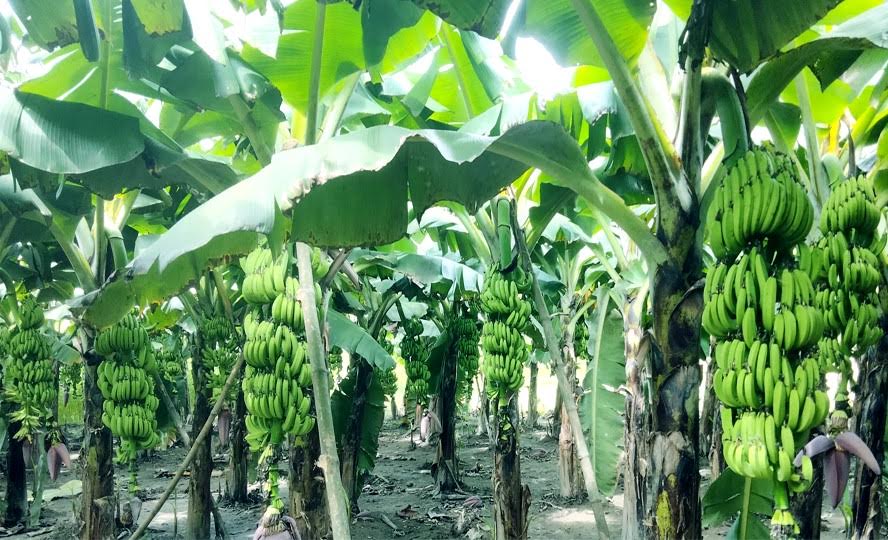News Flash

By Md Mamun Islam
RANGPUR, July 25, 2025 (BSS) - Banana cultivation has emerged as a transformative force for farmers across the Rangpur agricultural region, offering renewed hope and economic upliftment amidst the challenges posed by low returns from traditional crops like rice and potatoes.
Officials at the Department of Agricultural Extension (DAE) report a growing interest in banana farming among farmers in all five districts of the region -- Rangpur, Gaibandha, Lalmonirhat, Kurigram and Nilphamari -- due to consistent bumper yields and favorable market prices.
Acting Additional Director at the DAE for Rangpur region, Agriculturist Md Sirajul Islam, said banana was cultivated on 2,683 hectares of land during the last Rabi season. Additionally, 1,594 hectares of land have been brought under banana cultivation during the current Kharif-1 season.
"Banana farming is not only generating significant profits but also contributing to improved livelihoods, self-reliance, and better nutrition among farmers," he added.
In villages such as Haldibari and Khopati of Kawnia upazila, the shift to banana farming is changing fortunes. Talking to the news agency, farmers said that an age-old proverb by Khona: "If you plant banana plants and don't cut the leaves, you'll get clothes and rice" is now a proven reality.
Mizanur Rahman and Mofakhkharul Hossain, two farmers from Haldibari, described their transition from loss-making rice and potato cultivation to profitable banana farming. "We were struggling to break even with our previous crops," said Mizanur. "Last season, we planted 1,200 banana saplings on our land and saw remarkable success."
Mofakhkharul detailed the economics: "We spent around Taka 10,000 on every 100 plants, including costs for seedlings, irrigation, pesticides, and labor. We earned around Taka 30,000 from every 100 banana trees. This year, we expect even higher returns."
Another farmer, Mohammad Afzal Hossain of Khopati, highlighted how increased demand from outside districts such as Dhaka and Cumilla has eliminated the need to take bananas to the local markets. "Traders come to our doorsteps and offer us fair prices," he said.
Mominul, a farmer from Haldibari, cultivated bananas on 34 decimals of land, spending Taka 40,000. "I previously earned Taka 85,000 from that plot, but this year I expect to sell for as much as Taka 1.3 lakh," he said. "With proper storage facilities, we could fetch even better prices."
Local banana wholesalers Abdur Razzaque and Monwar Hossain affirmed the high quality of bananas grown in Kawnia upazila, which attract premium buyers from various districts.
Bazlur Rahman, a trader from Dhaka, echoed this view, saying: "Bananas from Kawnia are of superior quality, and we're happy to pay the right price."
Kawnia Upazila Agriculture Officer, Agriculturist Tania Akter, said that high-yield and market-preferred varieties like 'Himsagar', 'Meher Sagar', and 'Sabri' are being promoted extensively in the area. "Banana cultivation is proving to be a blessing for farmers here," she said.
As the demand for bananas continues to rise, experts suggest that investment in cold storage and better supply chain facilities could further maximize profits for farmers and sustain this agricultural success story in Rangpur.